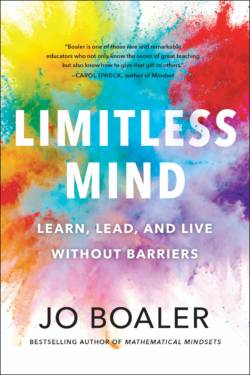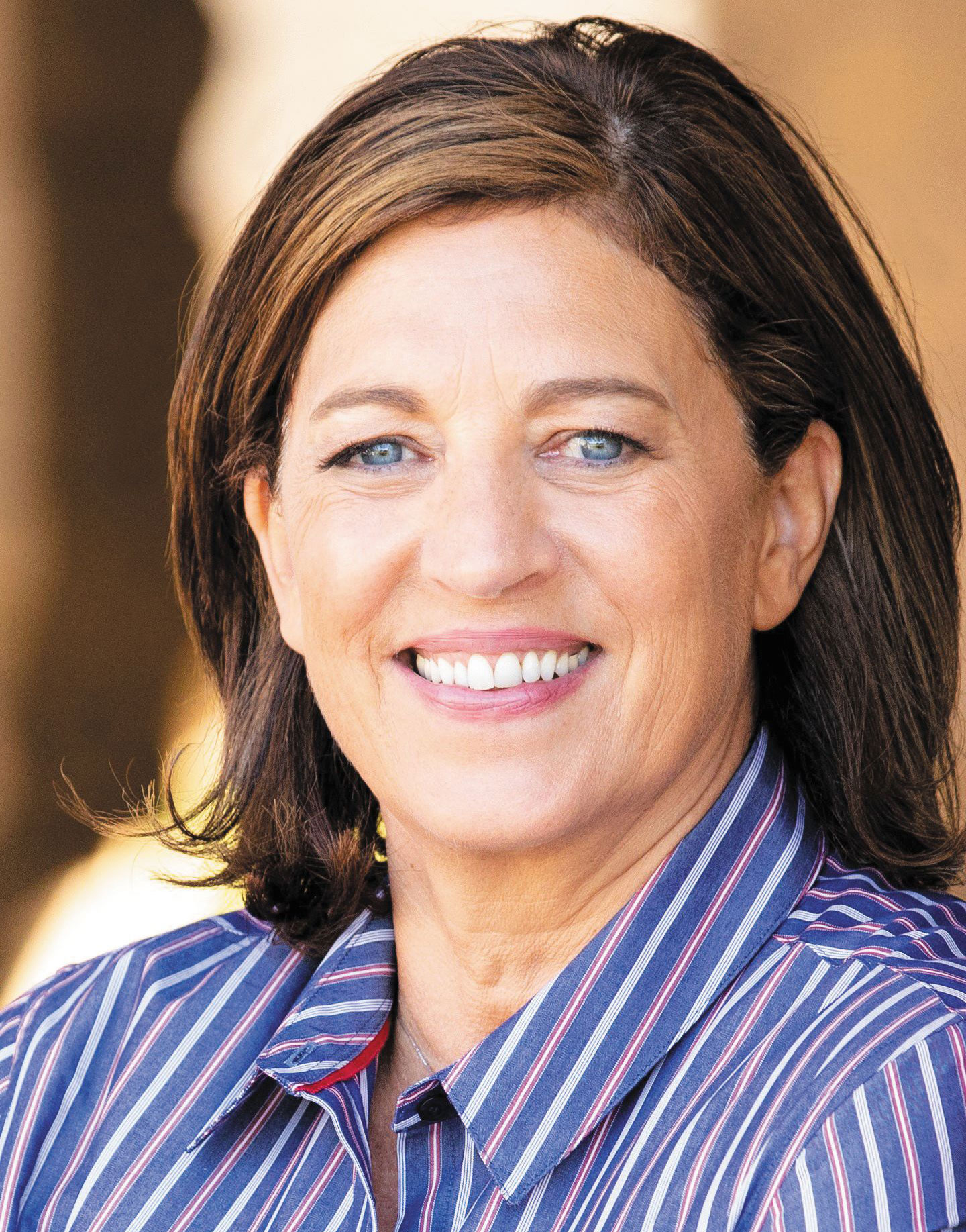How Collaboration Unlocks Learning and Lessens Student Isolation
Author: MindShift
Go to Source
Excerpted from LIMITLESS MIND by Jo Boaler, copyright 2019. Reprinted with permission by HarperOne, an imprint of HarperCollins Publishers.
By Jo Boaler
Why Is Collaboration Important?
Over my lifetime I have encountered a small number of fascinating situations, some through research and some through personal experience, in which collaboration and connection produced surprising outcomes. Some of these have related to learning, some to the pursuit of equity, and some to the advancement of ideas, even in the face of severe opposition. These different cases all shed light on something that neuroscience is also showing—when we connect with other people’s ideas there are multiple benefits for our brains and for our lives.
Uri Treisman, a mathematician at the University of Texas at Austin, used to teach at the University of California, Berkeley. While Uri was at Berkeley, he noticed that 60 percent of African American students who took calculus were failing the class. This caused many to drop out of college altogether. Uri began looking at more university data and saw that no Chinese American students were failing calculus, so he asked the question: What is the difference between these two cultural groups that seems to be causing this discrepancy?
Uri at first asked the other mathematics faculty what they thought the reason was. They came up with a range of reasons: perhaps African American students came into the university with lower math scores or an insufficient mathematical background; perhaps they were from less wealthy homes. None of these suggested reasons were correct. What Uri found, through studying the students at work, was that there was one difference—the African American students worked on math problems by themselves, whereas the Chinese American students worked collaboratively. The Chinese American students worked on their assigned math problems in their dormitories and in the dining halls, thinking about them together. By contrast the African American students worked alone in their dormitory rooms and when they struggled on problems, they decided they were just not “math people” and gave up.
 Uri and his team set up workshops for the more vulnerable students, including students of color. They created what Uri describes as a “challenging yet emotionally supportive academic environment.” In the workshops students worked on math problems together, considering together what it would take to achieve at the highest levels on different problems. The academic improvement that resulted from the workshops was significant. Within two years, the failure rate of African American students had dropped to zero, and the African American and Latino students who attended the workshops were outperforming their white and Asian classmates. This was an impressive result, and Uri has continued this approach at Austin. His approach has now been used in over two hundred different institutions of higher education. In writing about the experience, Uri says:
Uri and his team set up workshops for the more vulnerable students, including students of color. They created what Uri describes as a “challenging yet emotionally supportive academic environment.” In the workshops students worked on math problems together, considering together what it would take to achieve at the highest levels on different problems. The academic improvement that resulted from the workshops was significant. Within two years, the failure rate of African American students had dropped to zero, and the African American and Latino students who attended the workshops were outperforming their white and Asian classmates. This was an impressive result, and Uri has continued this approach at Austin. His approach has now been used in over two hundred different institutions of higher education. In writing about the experience, Uri says:
We were able to convince the students in our orientation that success in college would require them to work with their peers, to create for themselves a community based on shared intellectual interests and common professional aims. How‐ ever, it took some work to teach them how to work together. After that it was really rather elementary pedagogy.
The fact that it took work to teach students how to collaborate with each other after they had spent thirteen years in school speaks to the problems in our school system, where the common pattern is that teachers lecture and students work through problems alone. The team leading the work‐ shops was right to point out that success in college requires working with others and making good connections. Many people know this, but they still see no role for collaboration in learning. When Uri and his team encouraged students to work together, their mathematical learning paths changed and they found success. This success story was about learning calculus in college, but we could substitute any other subject and expect similar results.
Part of the reason students give up on learning is because they find it difficult and think they are alone in their struggle. An important change takes place when students work together and discover that everybody finds some or all of the work difficult. This is a critical moment for students, and one that helps them know that for everyone learning is a process and that obstacles are common.
Another reason that students’ learning pathways change is because they receive an opportunity to connect ideas. Connecting with another person’s idea both requires and develops a higher level of understanding. When students work together (learning math, science, languages, English— anything), they get opportunities to make connections be‐ tween ideas, which is inherently valuable for them.
A similarly noteworthy finding came from the results of a large‐scale testing program. In 2012, PISA assessments (international tests given to fifteen‐year‐olds worldwide, as mentioned earlier) showed that boys achieved at higher levels than girls in mathematics in thirty‐eight countries.
This result was disappointing and surprising. In the US and in most other countries, the achievement of girls and boys in school is equal. This reminded me again of the ways that tests distort what students actually know and can do.

This was underscored when the PISA team issued a report showing that when anxiety was factored into the analysis, the gap in achievement between girls and boys was fully explained by the lower confidence of girls. What appeared to be a gender difference in mathematics achievement was in reality a difference in mathematics confidence levels. Girls became more anxious when they took the individual math tests, a phenomenon that is well established, and one that should make any educator pause before basing decisions on test performance.
The impact of the different testing conditions as well as the potential of collaboration for reducing inequalities were also shown by another assessment the PISA team conducted. In addition to the usual individual mathematics test, they did an assessment of collaborative problem solving. In this assessment students did not collaborate with other students but with a computer agent. They had to take on the ideas of the agent and connect with and build upon them to collaboratively solve complex problems. This, to me, gauges something much more valuable than what a student produces on an individual math test. Instead of reproducing knowledge individually, students are asked to consider another’s ideas and work with them to solve a complex problem. This is also more consistent with the world of work students are being prepared for.
In the test of collaborative problem solving, administered in fifty‐one countries, girls outperformed boys in every country. This notable result was accompanied by two others—there were no significant differences in outcomes between advantaged and disadvantaged students, a rare and important finding. And in some countries diversity boosted performance. The team found that in some countries “non‐ immigrant” students achieved at higher levels when they were in schools with larger numbers of “immigrant” students, a fantastic result, suggesting that diverse communities of learners help students become better collaborators.
The results of the PISA assessment of collaborative problem solving shine a light on the pursuit of equity, revealing also the discriminatory nature of individual testing, something that anyone who gets anxious about high‐stakes testing fully understands. What does it mean that for girls collaboration, even with a computer agent, increases their confidence levels and causes them to achieve at higher levels? Similarly, what does it mean that African American students go from failing calculus to outperforming other, previously more successful, students when they collaborate? This research reveals the potential of collaboration, not only for girls or students of color, but for all learners and thinkers. When you connect with someone else’s ideas, you enhance your brain, your understanding, and your perspective.
Neuroscientists also know the importance of collaboration. Research shows that when people collaborate, the medial orbitofrontal cortex and the frontoparietal network are activated, the latter of which aids in the development of executive functions. Neuroscientists refer to these different brain areas as the “social brain.” When we collaborate, our brains are charged with the complex task of making sense of another’s thinking and learning to interact. Social cognition is the topic of much current neuroscientific investigation.
Collaboration is vital for learning, for college success, for brain development, and for creating equitable outcomes. Beyond all of this, it is beneficial to establish interpersonal connections, especially in times of conflict and need.
Victor and Mildred Goertzel studied seven hundred people who had made huge contributions to society, choosing those who had been the subject of at least two biographies, people such as Marie Curie and Henry Ford. They found, in‐ credibly, that less than 15 percent of the famous men and women had been raised in supportive families; 75 percent had grown up in families with severe problems such as “poverty, abuse, absent parents, alcoholism, serious illness,” and other major issues. Their study was conducted in the 1960s. Clinical psychologist Meg Jay, in her interesting Wall Street Journal article on resilience, reports that similar results would be found today and cites Oprah Winfrey, Howard Schultz, and LeBron James as examples of people who grew up in extreme hardship.
Jay has studied resilience over many years and points out that people who survive hardship often do better, but not through “bouncing back,” as some think, because the recovery process takes time and is more of a battle than a bounce. She also points out those who ultimately benefit from hardship, becoming stronger and resilient, do so when they maintain self‐belief, when they “own the fighter within,” and when they connect with other people. The thing that people who overcome hardship and do not become defeated by it have in common is that in times of need they all reached out to someone—a friend, a family member, or a colleague—and those connections helped them survive and develop strength.
Jo Boaler is the Nomellini-Olivier Professor of Education at Stanford, cofounder of youcubed.org and author of Limitless Mind: Learn, Lead & Live without Barriers by HarperOne, an imprint of HarperCollins Publishers.
